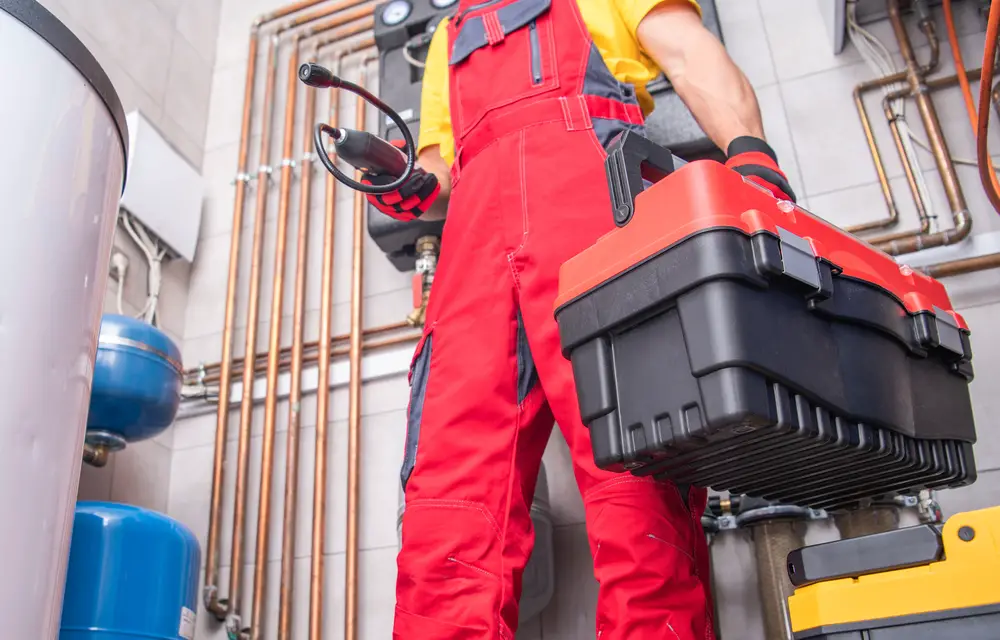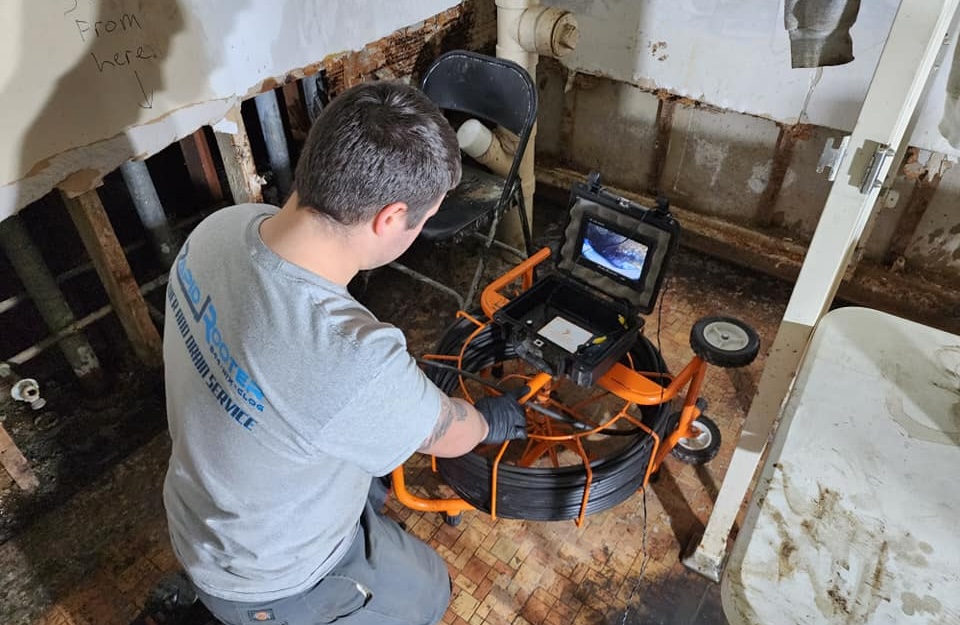Water leaks in commercial buildings can often go unnoticed until they turn into major issues, causing not just minor inconveniences but leading to significant water loss, extensive property damage, and alarmingly high operational costs. These leaks, whether small drips or major ruptures, can stem from various sources, such as aging pipes, faulty plumbing systems, or environmental stress.
For property managers, business owners, and maintenance teams, understanding the nuances of commercial leak detection is not just beneficial; it’s a critical aspect of effective building management.
Here, we will delve deep into the world of commercial leak detection. We aim to equip you with knowledge to quickly spot early signs of leakage, assess their impact and come up with effective strategies for fixing them. Everything will be discussed here, from basic principles of commercial water leak detection to advanced diagnostic techniques!
Understanding Commercial Leak Detection
The Importance of Leak Detection in Commercial Settings
In commercial environments, undetected water leaks, such as underground slab leaks, wall leaks, or other hidden issues, can lead to substantial expenses and operational disruptions. Early leak detection and repair can prevent these issues, ensuring the safety and integrity of the building’s structure and its utility systems.
How Leaks Commonly Occur in Commercial Buildings
Aging Infrastructure: One of the most common causes of leaks in commercial buildings is the aging of infrastructure. Over time, plumbing systems and pipes deteriorate due to wear and tear. Materials like metal can corrode, while others may weaken or crack, leading to leaks. This is particularly prevalent in older buildings where the plumbing system has not been updated for years.
Pipe Corrosion: It is a natural process that gradually destroys metal pipes over time. Contributing factors for corrosion include the pH of water, the chemical composition of the water, temperature and oxygen content. Corrosion may lead to thinened pipe walls, which eventually leak or burst.
Faulty Plumbing and Installation Errors: Substandard materials or inappropriate installation of plumbing systems can lead to leaks, including improperly sealed joints or misfitted pipes, which could go undetected for some time due to being in walls or underground locations. Even minor mistakes during installation could cause leaks that remain undetected for months after their occurrence.
External Factors: Weather conditions such as freezing temperatures can lead to pipe bursts as water inside the pipes freezes and expands. Additionally, construction activities near the building can disturb the ground and the underlying plumbing, leading to leaks. Even nearby tree roots can invade and damage pipes over time.
High Water Pressure: Sometimes, the cause of leaks is simply too much pressure within the pipes. Pipes and fixtures can only handle so much pressure, and when they exceed their capacity, it can lead to leaks or pipe bursts.
Regular Wear and Tear: Everyday use and the constant flow of water can take a toll on plumbing fixtures and pipes. Over time, seals can wear out, connections can loosen, and pipes can develop small fissures.
Identifying Commercial Water Leaks
Signs of Water Leaks in a Commercial Setting
Unexplained Increase in Water Bills: A sudden spike in water usage that cannot be attributed to operational changes is often a red flag.
Visible Water Damage: Stains or discolorations on walls, ceilings, and floors can indicate a hidden leak.
Musty Odors: Persistent damp or musty smells, especially in areas with no visible water, can suggest a leak behind walls or under floors.
Mold and Mildew Growth: Excess moisture from leaks can result in mold and mildew, posing health risks and damaging building materials.
Tools and Technologies for Detecting Leaks
Advanced technology has made leak detection more efficient and less intrusive. Some commonly used tools and technologies include:
Acoustic Leak Detectors: Utilize sound technology to detect the noise created by water escaping from pipes.
Infrared Cameras: Thermal imaging can identify temperature differences caused by wet areas.
Electronic Leak Detection Devices: These can pinpoint the location of leaks in complex plumbing systems.
Building Water Leak Detection Strategies
Here are effective building leak detection strategies that you can follow
Regular Inspections and Maintenance
Regularly scheduled inspections are vital in preventing and detecting leaks. This includes checking plumbing systems, inspecting roofs and building exteriors, and monitoring areas prone to water accumulation.
Proactive Leak Detection Measures
Pressure Testing: This method involves pressurizing pipes to detect any loss of pressure, indicating a leak.
Dye Testing: Safe dyes can be introduced into the water system to visually identify leak points.
Implementing Smart Water Sensors: These sensors can detect unusual water flow or moisture levels, alerting maintenance teams immediately.
Responding to Detected Leaks
Immediate Steps to Take
Once a leak is detected, immediate action is necessary to minimize damage:
Shutting Off Water Supply: If the leak is severe, shutting off the water supply can prevent further damage.
Contacting Professional: For complex leaks, professional leak detection assistance ensures accurate detection and repair.
Documenting the Damage: This is essential for insurance claims and future reference.
Repair and Prevention
Timely Repairs: Promptly addressing detected leaks prevents escalation.
Upgrading Plumbing Systems: Older systems might need upgrades to more durable materials.
Regular Training for Staff: Educating staff on leak detection and prevention helps in early detection.
The Role of Professional Leak Detection Services
When to Call in Experts
While some leaks can be detected and managed in-house, certain situations require professional plumbers expertise. This includes hidden leaks, large-scale leaks, and leaks involving complex systems.
Services Offered by Leak Detection Professionals
Professional leak detection services offer comprehensive solutions, including advanced diagnostic tools, expert analysis, and repair recommendations. They can also provide ongoing maintenance services and advice on prevention strategies.
Securing Your Property: Final Thoughts on Leak Detection
Effective commercial leak detection is a critical aspect of property management. Understanding the signs of leaks, utilizing the right tools and technologies, and implementing proactive strategies can significantly mitigate the risks and costs associated with water leaks. Whether managing the issue in-house or seeking professional help, timely action and regular maintenance are vital to safeguarding your commercial property from water damage.
Rapid-Rooter is your go-to expert for all your commercial leak detection needs in Danbury, CT. With their skilled team and advanced technology, we ensure accurate and efficient leak detection and repair services. Don’t let water leaks disrupt your business; contact Rapid-Rooter today for a thorough inspection and peace of mind.


